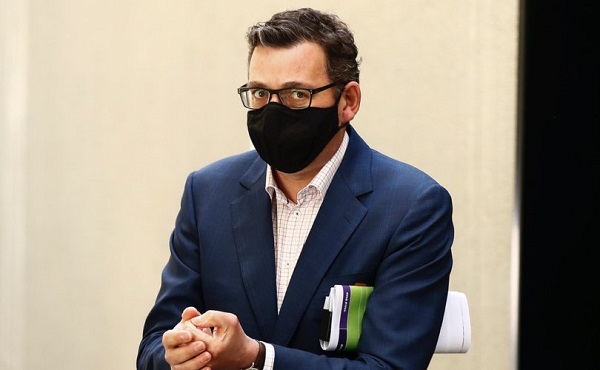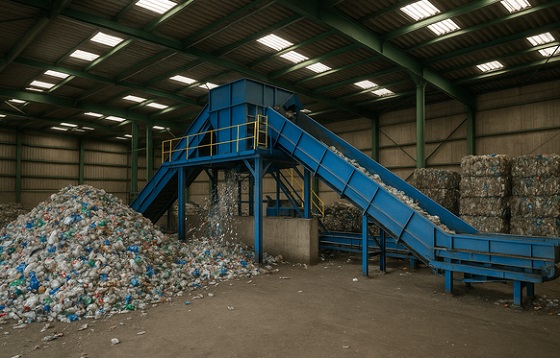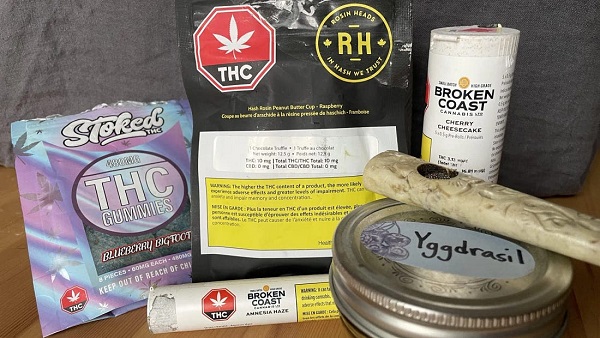International
White smoke vs. black smoke: How do we know when we have a new pope?
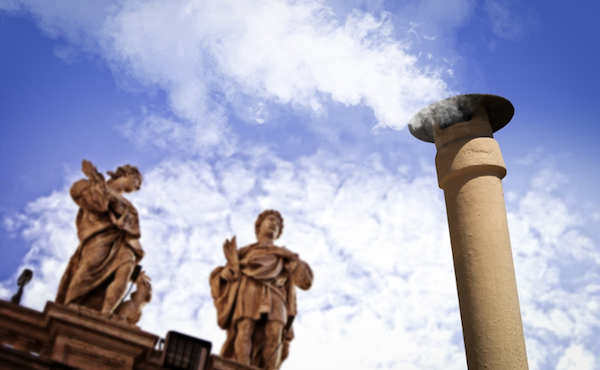
From LifeSiteNews
By Michael Haynes, Snr. Vatican Correspondent
Though no formal schedule has been released yet, it is expected that the smoke on Wednesday night could appear between 7 and 8 p.m. Rome time (11 a.m. and 12 noon MST)
How does voting work in a conclave, and when can we expect to see the black or white smoke?
LifeSite’s explainer is here to answer your questions.
Votive Mass and procession into the Sistine Chapel
Wednesday, the first day of the conclave, sees all the cardinal electors gather in St. Peter’s Basilica, where they celebrate the special votive Mass for the election of a pope. The Mass takes place at 10 a.m.
After this, the cardinal electors will next present themselves to the Pauline chapel on the first floor of the Apostolic Palace in the afternoon, at 4:30 p.m. Here they listen to an exhortative homily intended to offer spiritual wisdom for the weighty duty they face. From here they make the famous procession into the Sistine Chapel, where they shall swear their oaths for the conclave itself.
It is at this point that the televised production will stop, after the Master of Ceremonies orders all the non-electors out of the room with his famous command “Extra omnes.”
First vote Wednesday
That afternoon sees the first vote take place. This is widely understood to be an event to take stock of who has early support, but also for some cardinals to pay respect to some honored member of the conclave by voting for them, even though they are not expected to actually be elected pope.
Each cardinal must walk up to the altar in the Sistine Chapel and place his written ballot paper in a container for it to be counted.
According to Pope John Paul II’s 1996 apostolic constitution Universi Dominici gregis (UDG), the men who count and check the ballots are themselves chosen by lot. If they find discrepancies in the number of ballots in a vote, then they burn all of the papers before officially nullifying the vote.
The ballots of every vote are burned and mixed with a special chemical to produce the famous black smoke so eagerly watched for in St. Peter’s Square. UDG sections 64 through 71 contain precise details about how the votes proceed.
Though no formal schedule has been released yet, it is expected that the smoke on Wednesday night could appear between 7 and 8 p.m. Rome time.
The smoke used to be from the burning of ballot papers, but in recent times a chemical has been used to ensure the correct color is clearly visible to those waiting in the square outside. The ballots and smoke are burned in the temporary stove installed in a corner of the Sistine Chapel.
Thursday voting
The second day sees the start of voting in earnest. There are two sessions – morning and afternoon – each with two votes, meaning a total of four votes per day according to the laws governing the conclave.
However – only at the end of each of the two sessions will there be a smoke signal. That is of course only if a cardinal is not elected on one of the ballots during the day.
The ballot counters read aloud each name on the ballot papers, and tallies are created to record the votes each cardinal receives.
The morning session is anticipated to end some time around noon local time. Cardinals then return to the Casa Santa Martha for lunch, and resume voting around 4 p.m. The evening smoke signal is due around 7 – 8 p.m., unless a pope is elected in the afternoon’s first round of voting.
Pope elected
Upon a candidate receiving two-thirds of the vote, he is asked formally if he accepts the election as Supreme Pontiff.
If the man accepts, he is then asked what name he will take as pope. When he reveals this, the Master of Papal Liturgical Ceremonies swiftly writes a document detailing the new pope’s acceptance and his name.
Providing the candidate is already a bishop – which almost all the members of the College of Cardinals are – the candidate becomes the validly elected pope as soon as he pronounces his formal acceptance of the election.
The ballots are collected, mixed with the chemical for white powder, and burned so that those in St. Peter’s Square see the famous white smoke from the chimney of the Sistine Chapel.
The cardinals greet the new pope in the Chapel and make their individual acts of “homage and obedience,” before all collectively making a prayer of thanksgiving.
The newly elected pope is taken into the sacristy next to the Sistine Chapel, where he changes into one of the white cassocks already prepared for him. This small room is known as the “room of tears” due to the tears shed by the newly name pontiff as he reflects on the enormity of the task now before him.
Once he is ready, the formal announcement to the world is made, with the senior cardinal deacon stepping onto the loggia of the Vatican to pronounce the famous words: “Annuncio vobis gaudium magnum: habemus papam.”
A short time later, the newly elected pope will emerge onto the loggia and greet the crowds who have flocked to the square beneath him, offering his first blessing as pontiff.
Crime
Inside B.C.’s Cultus Lake Narco Corridor — How Chinese State-Linked Syndicates are Building a Narco Empire in Canada
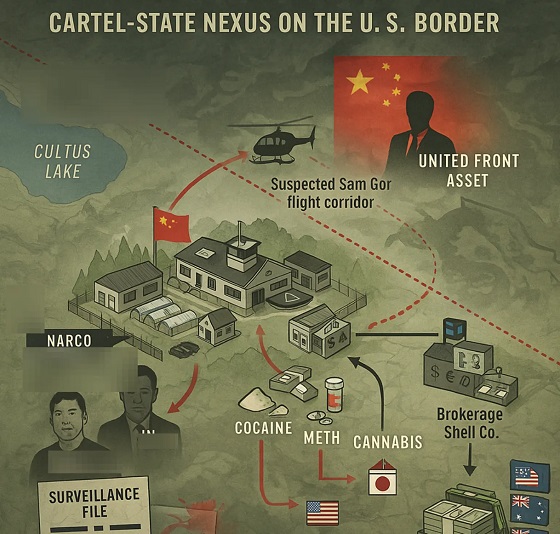
Many of the properties of concern are large-acreage farms with cannabis licenses dating back decades—once controlled by B.C. biker gangs, but quietly consolidated since the early 2000s under the influence of figures linked to the Sam Gor syndicate.
Nestled in British Columbia’s Fraser Valley, hugging the U.S. border, Cultus Lake is surrounded by towering rainforest pines—a postcard image of Canada’s serene beauty. Shaped by the last Ice Age, the south shore’s cavernous ridges form the Columbia Valley, which snakes into Washington State—sparsely populated, with no official border crossing, and peopled mostly by large ranch owners. But the pristine corridor conceals deadly secrets with geopolitical consequences.
According to multiple Canadian intelligence experts, significant Columbia Valley properties have been quietly seized as strategic high ground by associates of the notorious Sam Gor narco syndicate, operating in tandem with agents of the Chinese state’s security and foreign influence apparatus.
“The number of people—nefarious people—who have places down there, it’s quite phenomenal,” an intelligence analyst not authorized to be named said.
“It’s a very difficult place to do any surveillance on. Not a lot of properties, big properties—and anybody that doesn’t have a local license plate or something from there, they just get spotted right away.” Combine that with its location—adjacent to the U.S. border—and, the source added, “it’s got to be some of the most favorable area in the Lower Mainland to be doing any kind of cannabis stuff or drug smuggling.”
Experts describe what amounts to a special zone of Chinese crime and influence activities—tied clandestinely to Beijing in function, if not officially—a secure enclave where key properties have been tied to covert cross-border helicopter operations.
Many of the properties of concern are large-acreage farms with cannabis licenses dating back decades—once controlled by B.C. biker gangs, but quietly consolidated since the early 2000s under the influence of figures linked to the Sam Gor syndicate. The networks tied to these estates, sources say, not only profit from cannabis and sophisticated money laundering brokerages that transfer illicit proceeds—ultimately benefiting the Chinese state—but are also linked to Beijing’s so-called “CCP police station” activities, and numerous significant investigations into fentanyl, methamphetamine, heroin, cocaine, and Chinese precursor imports.
According to one source familiar with U.S. government investigations in British Columbia, one Columbia Valley property stands out with exceptional urgency. Spanning roughly 30 acres and situated steps from the U.S. border, the estate has triggered alarms among The Bureau’s national security sources—not only due to its strategic location, but because of the individuals connected to it.
Chief among them: Sam Gor himself, the syndicate’s elusive boss, a Chinese Canadian named Tse Chi Lop. Of equal or greater concern: a senior Chinese security and intelligence figure with ties to Sam Gor’s upper command, and individuals associated with Chinese mining and chemical interests and Beijing’s United Front Work Department.
According to RCMP sources, the site has also been linked to numerous narcotics investigations in Western Canada and cross-border helicopter activity into Washington State—escalating it from regional concern to a geopolitical flashpoint between Ottawa and Washington.
Among other key figures linked to the property: Peter Lap-San Pang, a Toronto-based alleged Sam Gor associate named in a British Columbia civil forfeiture case involving a suspected illegal mansion casino; and Ye Long Yong, a convicted Sam Gor “kingpin” identified in Canadian court files for importing, exporting, and trafficking heroin, methamphetamine, and cocaine. During a parole hearing, Ye told officials that “a successful person in Toronto gave” him his drug business.
The parole records noted: “There was a great deal of effort from many police organizations from all around the world, with interpreters in several languages and evidence gathered for a long period of time in order to infiltrate and bring down Mr. YE’s criminal organization.”
Also tied to the property is a United Front–associated “Big Circle Boy” contemporary of Tse Chi Lop, who was named in B.C.’s anti-money laundering inquiry as the superior of Paul King Jin—the notorious boxing gym owner, loan shark, and money laundering suspect at the center of Canada’s largest-ever casino money laundering investigation, E-Pirate.
These are just several of the “many other Sam Gor members” associated with this 30-acre farm on the U.S. border, a source said—individuals who have surfaced repeatedly in B.C.’s highest-profile organized crime investigations over the past two decades, including the E-Pirate case.
Most of the Sam Gor and Chinese state-linked suspects tied to this particular Chilliwack-area border property—with the exception of Tse Chi Lop—remain less publicly known than Paul King Jin, whose notoriety has steadily grown since the Vancouver Sun’s 2017 revelations about the RCMP’s failed E-Pirate probe. Jin later survived a high-profile targeted shooting at Richmond’s Manzo restaurant in 2020—an attack that killed his business partner, Jian Jun Zhu, another Sam Gor leader allegedly behind the Silver International operation. That Richmond-based scheme—now infamous for revealing the “Vancouver Model” of money laundering—is believed to have moved hundreds of millions in drug proceeds through a combination of government-regulated and underground casinos, with links to drug-cash banks embedded in diaspora communities across the Western Hemisphere, including Mexico, South America, and hundreds of Chinese bank accounts.
More recently, The Globe and Mail reported troubling information—verified by The Bureau—that Canadian security officials had clandestinely surveilled Jin and other Chinese businessmen privately meeting with then–Prime Minister Justin Trudeau in a Richmond hotel, during the height of the E-Pirate and related Chinese narcotics trafficking investigations in British Columbia.
The U.S. government’s concerns about transnational money laundering suspects tied to this nexus—including individuals connected to Columbia Valley properties and the private meeting with Prime Minister Trudeau—were underscored by a request for RCMP assistance in surveilling several Chinese nationals who, according to one source, arrived in Vancouver on a private jet.
Yet while Jin drew headlines in Canada, Sam Gor leader Tse Chi Lop—who holds Canadian citizenship—operated far more quietly across Vancouver, Toronto, Hong Kong, Macau, Taiwan, mainland China, and the United States prior to his arrest in the Netherlands several years ago. He has long been identified as a top figure in what former U.S. State Department investigator David Asher describes as the “command and control” layer of Chinese Communist Party-linked money laundering in Toronto and Vancouver, facilitating the financial operations of Mexican, Latin American, and Chinese cartels across the Western Hemisphere.
“Tse [Chi Lop] has a long history here [in British Columbia],” one Canadian intelligence expert said. “He’s connected to Jin and the network out here.” Regarding the elite Sam Gor members associated with significant Columbia Valley properties, they added: “There’s state interaction with some key components of those groups.”
One of the key figures associated by Canadian intelligence with the 30-acre Columbia Valley farm, Ye Long Yong, is also little known outside elite international law enforcement circles. But his role in Sam Gor’s transnational operations from Vancouver was extremely significant, an intelligence source said. Filings from his parole hearings underscore this, stating: “Mr. YE operated his criminal organization for years prior to his arrest. He demonstrated his ability to conceal his illegal activities from the authorities for many years.”
Pointing to yet another high-profile property near Cultus Lake, a different source said: “There’s another very, very significant Asian organized crime woman—she had a heavy influence out in that area, to do with cannabis. And she apparently had a lot of higher-level Chinese government connections.”
Another source, familiar with a federal investigation involving an organized crime figure flying a helicopter from the Cultus Lake region into U.S. territory, emphasized long-standing frustrations between allied agencies. “With the choppers and this area around Cultus Lake, I don’t think the Border Integrity team at Federal Serious and Organized Crime has ever truly continued paying attention,” the source said. “That’s why DEA and others are so pissed with the RCMP—not truly following up, not looking at the details. That corridor has been known for years.”
For Canadian intelligence veterans watching the pattern, the explanation points to more than simple organized crime. “This is for years to come,” one source said. “You set things in place in environments you can monitor, inside and out. Thinking like special forces—you pick the high ground, the environment where you can survey everything around you to maintain the integrity and safety of your product. That’s why the corridor is so special to organized crime. You can do that there.”
While these properties—and the alleged helicopter missions they support into the United States—offer a visceral glimpse of the threat posed by Chinese transnational networks engaged in poly-narcotics trafficking and money laundering, the deeper, state-linked financial architecture behind them is best illustrated by the RCMP’s startling findings. Investigators uncovered a global laundering network rooted in Vancouver-area brokerage houses, discreetly embedded in residential neighborhoods. These firms are tied to large-acreage land acquisitions across British Columbia used to cultivate cannabis for Asian organized crime.
Beneath the surface, authorities believe these operations fuel a broader system of poly-drug laundering, narcotics transshipment to other nations concealed within Canadian consumer exports, and coordination with Beijing’s foreign influence apparatus.
The Bureau will report next in this series on a groundbreaking investigation into the United Front brokerage system—an apparatus that facilitated narcotics trafficking from British Columbia into New York City and laundered drug proceeds from the United States back to Sam Gor and United Front networks in Vancouver.
There is mounting evidence that this same system—leveraging “legal” cannabis operations and money laundering brokerages tied to crime figures associated with Chinese consulate diplomats—is now suspected of operating not only in British Columbia but also in Ontario, with transnational reach into multiple U.S. states, including Maine.
Yet only fragments of evidence in official Canadian files hint at the “interoperability” between Chinese narco networks and the United Front Work Department, including its political influence arms.
British Columbia and Ontario have emerged as key battlegrounds where Chinese interference and triad-linked organized crime networks have deeply penetrated society. According to Canadian and U.S. experts who spoke with The Bureau, this includes the integration of the Sam Gor syndicate with Beijing’s intelligence and foreign influence apparatus, operating under the umbrella of the United Front Work Department.
Due to the sensitivity of the matter, the only expert identified in interviews is David Asher, who stated that the U.S. government views the United Front as the envelope surrounding China’s underground banking and financial networks—the same networks believed to have infiltrated TD Bank in Toronto.
Multiple Canadian police sources across British Columbia, Alberta, and Ontario confirmed that Chinese diplomats have been observed meeting with senior figures in Asian Organized Crime, including actors tied to the 30-acre “farm” property on the U.S. border near Cultus Lake.
The only known record pointing to official Canadian acknowledgment of these networks was first obtained by Global News in its reporting on Beijing’s Fox Hunt operations. The document—drafted at the request of B.C.’s Solicitor General in 2023—prompted the RCMP to prepare a classified briefing for Premier David Eby’s government. The version released under Freedom of Information legislation was completely redacted and titled: “The People’s Republic of China: Foreign Actor Influence Undertaken by the Chinese Communist Party / United Front Work Department & Interoperability with Transnational Organized Crime.”
Editor’s note: Come back to read The Bureau’s exclusive, paywalled investigation into United Front brokerage houses and illicit grow-ops—operations powered by exploited illegal immigrants.
The Bureau is a reader-supported publication.
To receive new posts and support my work, consider becoming a free or paid subscriber.
Invite your friends and earn rewards
International
Trump DOJ investigating Washington for new law forcing priests to break Seal of Confession
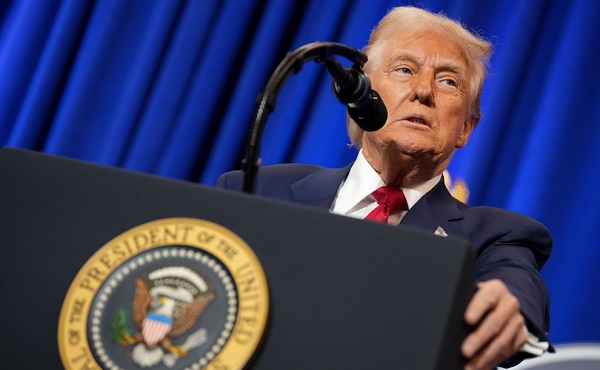
From LifeSiteNews
By Matt Lamb
The Trump DOJ has launched a federal civil rights investigation into a new Washington law that would jail priests unless they break the Seal of Confession, an excommunicable offense.
The state of Washington is now under federal investigation for a newly signed law that orders priests to break the Seal of Confession by turning in penitents – or face jail time.
“SB 5375 demands that Catholic Priests violate their deeply held faith in order to obey the law, a violation of the Constitution and a breach of the free exercise of religion cannot stand under our Constitutional system of government,” Assistant Attorney General Harmeet Dhillon wrote in a news release on Monday.
“Worse, the law appears to single out clergy as not entitled to assert applicable privileges, as compared to other reporting professionals. We take this matter very seriously and look forward to Washington State’s cooperation with our investigation,” Dhillon stated.
Democrat Governor Bob Ferguson, a left-wing politician, signed the legislation on Friday, May 2, as first reported by LifeSiteNews.
Ferguson cited his alleged Catholic faith and his uncle, who was a Jesuit priest, in his comments justifying his decision to send government agents after priests who don’t excommunicate themselves by revealing alleged abuse heard in Confession.
“My uncle was a Jesuit priest for many years, (I’ve) been to Confession myself – and so I’m very familiar with that,” Ferguson said during the signing. “I felt this was important legislation,” he added.
The Department of Justice (DOJ) notes the bill “singles out” priests, stripping them of their right to privileged communication.
The state’s new law excludes clergy from a list of “supervisors,” according to the DOJ, “who may not rely on applicable legal privileges, including religious confessions, as a defense to mandatory reporting.”
“The Civil Rights Division will investigate the apparent conflict between Washington State’s new law with the free exercise of religion under the First Amendment, a cornerstone of the United States Constitution,” the DOJ announced.
Washington state senator Noel Frame, a left-wing Democrat, pushed for the bill. She, like Ferguson, cited her alleged Catholic faith in pushing for the bill, although she said she will not be raising her child in the faith. Frame claimed this issue of confessional privacy led her to back away from Catholicism.
During the debate over the bill, Frame berated Seattle Auxiliary Bishop Frank Schuster for explaining that neither he, and not even Pope Francis, could change canon law when it comes to confessional secrecy.
Canon 1386 states, “A confessor (priest) who directly violates the sacramental seal incurs a latae sententiae excommunication reserved to the Apostolic See; he who does so only indirectly is to be punished according to the gravity of the offence.”
Frame previously dismissed religious freedom concerns during a hearing. “I have tried really hard over the last couple of years to find a balance and to strike a careful compromise,” she claimed before saying “sorry” for not being willing to “make a compromise anymore.” She criticized efforts to protect clergy-penitent privilege “in the name of religious freedom.”
A similar effort to jail priests died in Montana this year, led by another left-wing female Democrat who said she has apostatized and no longer practices Catholicism.
Legal expert Jonathan Turley has previously criticized efforts by Democrats to violate the religious freedom rights of priests and lay Catholics.
Turley, who is Catholic, wrote “the Washington State law is a frontal attack on free exercise and would be struck down if enacted.”
“The only question is why Democrats consider such legislation to be any more viable politically than it is constitutionally,” the George Washington University professor wrote in February on his legal commentary website.
The Washington State Catholic Conference stressed its opposition to the bill and said its priests will not comply.
-

 Health2 days ago
Health2 days agoJay Bhattacharya Closes NIH’s Last Beagle Lab
-

 COVID-191 day ago
COVID-191 day agoUS Government ADMITS It Approved Pfizer’s COVID “Vaccine” Despite Knowing About a Long List of Trial Violations
-
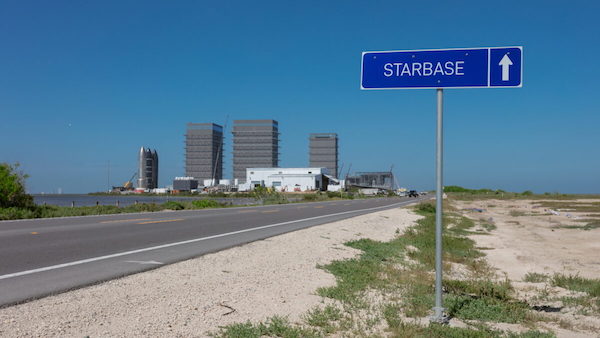
 Business2 days ago
Business2 days agoWelcome to Elon Musk’s New Company Town: ‘Starbase, TX’ Votes To Incorporate
-
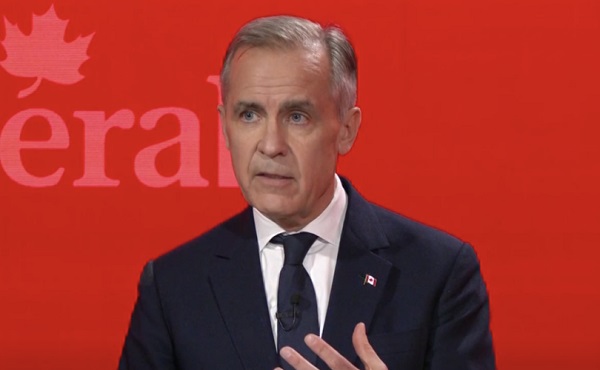
 Energy1 day ago
Energy1 day agoIs the Carney Government Prepared to Negotiate a Fair Deal for the Oil, Gas and Pipeline Sectors
-
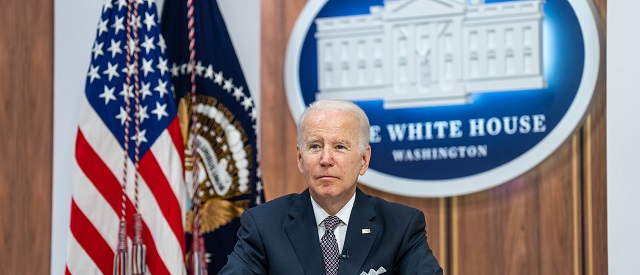
 Business1 day ago
Business1 day ago‘Got To Go’: Department Of Energy To Cut Off Billions Of Dollars’ Worth Of Biden-Era Green Energy Projects
-

 Artificial Intelligence1 day ago
Artificial Intelligence1 day agoThe Responsible Lie: How AI Sells Conviction Without Truth
-
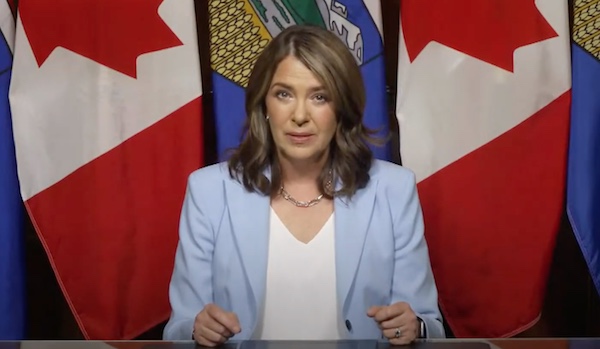
 Alberta23 hours ago
Alberta23 hours agoPremier Smith seeks Alberta Accord: Announces new relationship with Ottawa
-

 Alberta15 hours ago
Alberta15 hours agoSaudi oil pivot could shake global markets and hit Alberta hard





